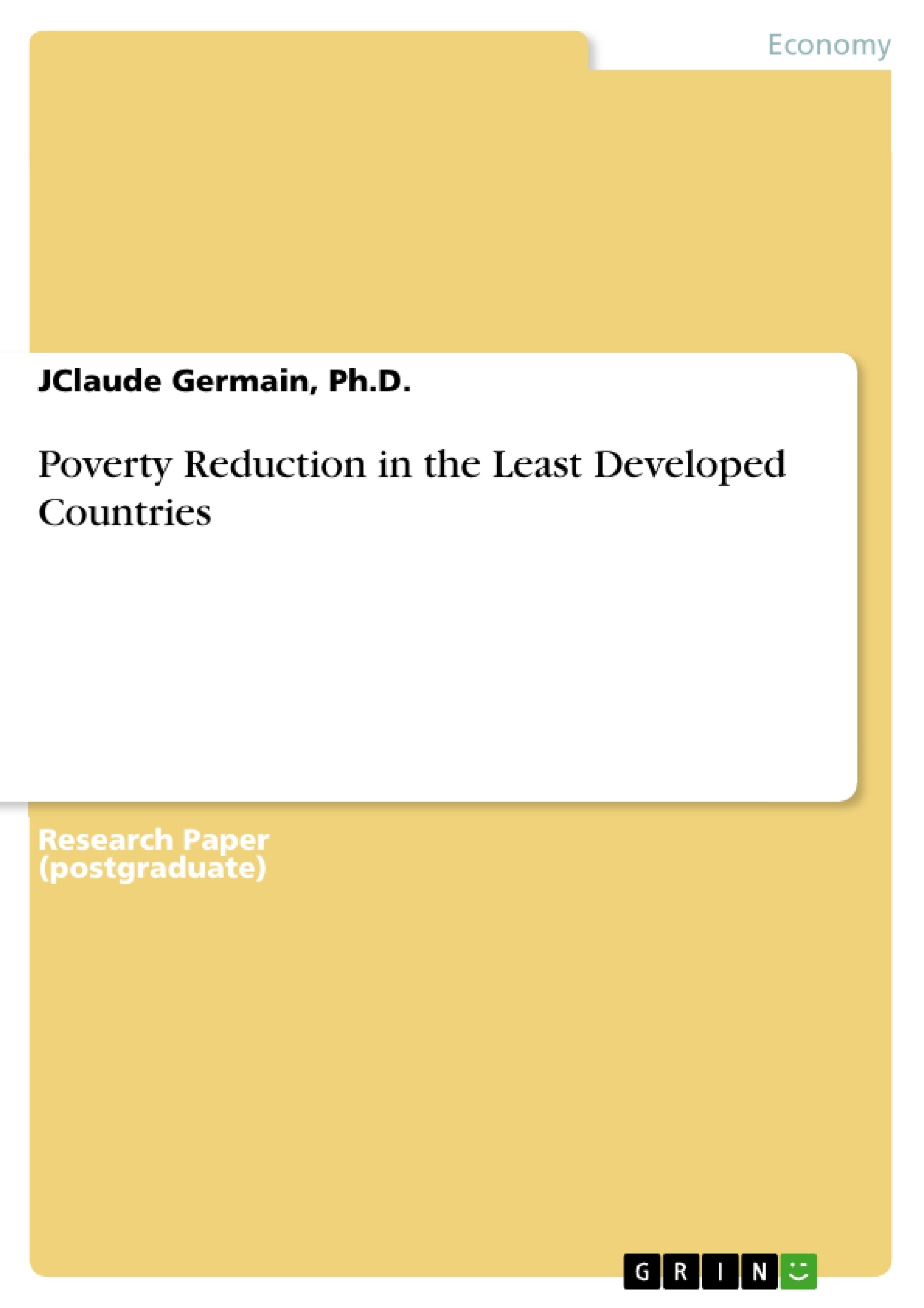This paper envisions to find out what has been done to help reduce the level of poverty in Least Developed Countries (LCDs). Moreover, it aims to identify and examine the effectiveness or ineffectiveness of the strategies implemented. Finally, it will be determined why it has been so difficult to graduate from the LDC category.
The Least Developed Countries are a sub-group of the Developing Countries (formerly referred to as less developed countries) and are defined by the United Nations as countries with low levels of income and human capital, and high economic vulnerability. Most of them are characterized by limited economic growth and export diversification, and a lack of competitive industries and exploitable natural resources. They also confront severe structural impediments to development and are vulnerable to natural disasters, such as droughts, floods, and hurricanes.
World Bank has further sub-classified 23 of the 47 LDCs as "fragile", and argues that these fragile countries experienced below-average GDP growth, under 4 percent a year compared with almost 6 percent in LDCs as a whole between 2000 and 2014. This is problematic because a growth rate of 7 percent has been targeted by international institutions to drive development in these countries.
Inhaltsverzeichnis (Table of Contents)
- INTRODUCTION
- 1. BACKGROUND ON THE LEAST DEVELOPED COUNTRIES
- 2. ASSISTANCE TO THE LEAST DEVELOPED COUNTRIES
- 2.1 Family Planning
- 2.2 Poverty Reduction Strategy (PRS) Initiative
- 3. GRADUATION
- 3.1 Requirements for Graduation
- 3.2. Causes for Non-Graduation
- CONCLUSION
- REFERENCES
Zielsetzung und Themenschwerpunkte (Objectives and Key Themes)
This paper aims to investigate the efforts made to reduce poverty in Least Developed Countries (LDCs), examine the effectiveness of implemented strategies, and explore the reasons behind the difficulty of LDCs graduating from this category. The paper will provide a brief background on LDCs and delve into the complexities of poverty reduction within this group.
- The challenges of poverty reduction in Least Developed Countries
- The effectiveness of assistance programs for LDCs
- The difficulties of LDC graduation
- The criteria used to classify a country as an LDC
- The economic vulnerability of LDCs and its impact on development
Zusammenfassung der Kapitel (Chapter Summaries)
- Introduction: This section introduces the paper's objectives and provides a brief overview of the context of poverty reduction in LDCs. It highlights the increasing concentration of global poverty among LDCs and their lagging economic development compared to the rest of the world.
- Background on the Least Developed Countries: This chapter delves into the characteristics of LDCs, including their low levels of income and human capital, economic vulnerability, and structural impediments to development. It discusses the challenges they face, such as limited economic growth, export diversification, and susceptibility to natural disasters.
- Assistance to the Least Developed Countries: This chapter explores various assistance programs aimed at poverty reduction in LDCs. It discusses the effectiveness of these programs and examines the challenges associated with their implementation.
Schlüsselwörter (Keywords)
The paper focuses on the key concepts of poverty reduction, Least Developed Countries (LDCs), economic vulnerability, development assistance, graduation criteria, and economic growth. It also explores the effectiveness of poverty reduction strategies implemented in LDCs.
- Citar trabajo
- JClaude Germain, Ph.D. (Autor), 2018, Poverty Reduction in the Least Developed Countries, Múnich, GRIN Verlag, https://www.grin.com/document/513569



